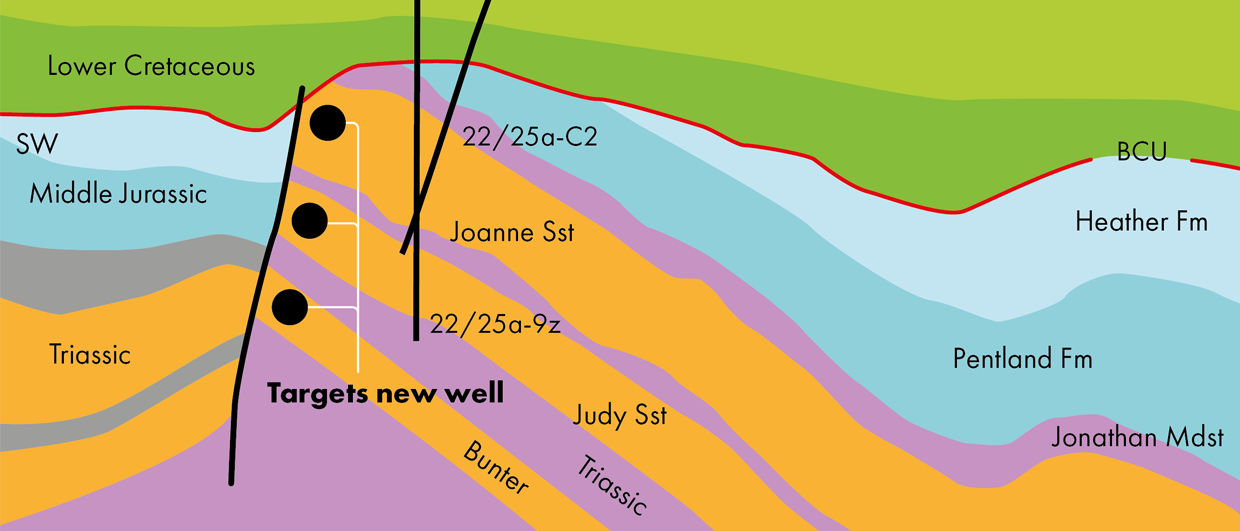One of the most important roles of conference chairs is to build a programme that ensures people want to stay until the bitter end of the last day. At Seismic 2024, the annual conference for the geophysical community organized by the SPE Aberdeen section, the last session of Day 2 certainly had the ingredients to make people want to stay. And in contrast to what usually happens to draw a crowd, the talks that were scheduled to keep participants from catching some glorious Aberdeen weather were about oil and gas.
Culzean
David Taylor from TotalEnergies started the session by presenting how his company is planning a new development well on the Culzean gas field in the Central North Sea. This HPHT field, which mainly produces from the Triassic Joanne Sandstone, came onstream in 2019 and has started coming off plateau in January last year. David showed that the lack of a 4D signal suggests that the very crest of the field has not experienced depletion yet, which subsequently led to further work to de-risk this compartment. Based on that, the company decided that it is worth drilling this part of the field, also because there are two deeper targets that may also hold gas – the Triassic Judy Member and the underlying Bunter Sandstone. During the Q&A, someone asked if the lack of a 4D signal could be because of a significant deterioration in reservoir properties, but David added that acoustic impedance data suggested that reservoir properties in this area look good.
Mariner
In contrast to Culzean, where an OBN survey is at the basis for reconstructing the 4D signal, at Mariner, which is operated by Equinor, it is towed streamer data. A duo from Equinor – Nick McArdle and Angus MacLellan – shed some light on the 4D seismic characterization of the Paleocene sands that constitute the field. One interesting observation they shared is that a 4D signal could already be seen in the Heimdal sands that overly the Maureen reservoir even before any production from the Heimdal had started. The Heimdal reservoirs are remobilized sands that don’t seem to connect to the underlying Maureen on seismic at first glance. But dynamic data has now proven there is a connection indeed.
Another really interesting feature about the Mariner presentation is the way the internal architecture of the Maureen reservoir has now been mapped. In my mind, the Maureen sands were just a thick interval of shelf sands, but the seismic and 4D data beautifully illustrate that the sands have slumped down the paleoslope, leading to the formation of many thrust planes in the compressional part of the deposit. These thrust planes, which often have a layer of carbonates at the base – scooped up from the underlying Chalk – have in turn proven to be driving fluid flow. All no surprise, but when compared to images I saw of the Maureen in Mariner years ago, there is really a lot more detail now.
Clair
The third talk on 4D seismic at UKCS flagship fields was from bp, presented by Lifeng Wang. Similar to Mariner, the 4D effect in Clair is caused by gas breakout as the pressure in the reservoir drops due to production. And again similar to Mariner, Lifeng showed that some of the individual reservoir units are connected, in this case through faults – a 4D effect could be seen lining up with a fault zone connecting two of the Devonian reservoir units.
These three presentations all clearly showed the major value 4D seismic has on planning wells in a producing asset. That is no big news at all, but to see this illustrated by the operators in three back-to-back presentations is surely something not to be missed. Worth staying at the conference for until the last slot. Well done Ian Barron and the committee of the Seismic 2024 conference.





